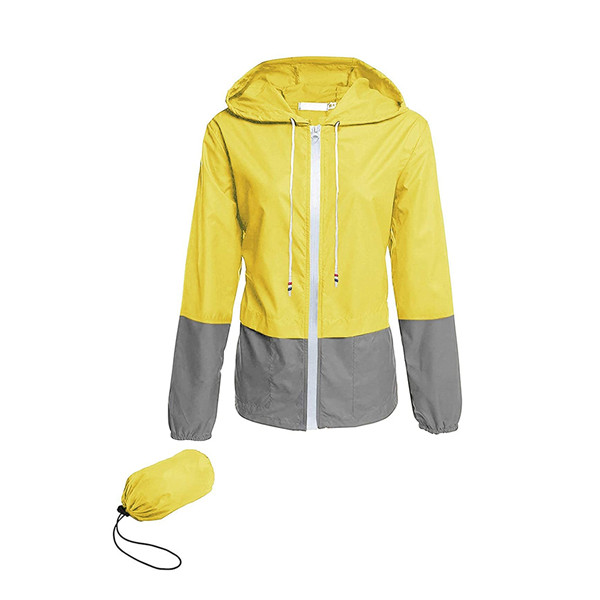 rainwears@163.com may@may-rain.com
rainwears@163.com may@may-rain.com Mon to Friday: 8.00 am - 7.00 pm
Mon to Friday: 8.00 am - 7.00 pm
Lightweight Jacket for Wind and Rain Protection During Outdoor Activities
The Essential Guide to Choosing the Perfect Wind and Rain Jacket
When it comes to outdoor adventures, whether you are hiking, biking, or simply walking in the park, the right clothing can make all the difference. One of the most vital pieces of gear for any outdoor enthusiast is a high-quality wind and rain jacket. This article will guide you through the essential aspects of choosing the perfect jacket to keep you comfortable and protected from the elements.
Understanding Wind and Rain Jackets
Wind and rain jackets are specifically designed to shield you from harsh weather conditions. Their primary functions are to provide wind protection, resist water, and allow for breathability. Most models incorporate advanced fabric technologies to ensure that light rainwater beads off the surface while allowing moisture from perspiration to escape.
Key Features to Look For
1. Waterproofing Look for jackets with a waterproof rating. This rating is often measured in millimeters, indicating the pressure of water that the fabric can withstand. A good waterproof jacket usually has a rating of at least 5,000 mm, but those designed for heavy rain may be rated at 10,000 mm or more.
2. Breathability A jacket's breathability is crucial for comfort, especially during intense physical activity. Breathable materials allow sweat to escape without allowing water to seep in. Look for jackets that utilize technologies like Gore-Tex, eVent, or similar, as these fabrics offer an excellent balance between water resistance and breathability.
3. Weight and Packability If you plan to be on the move, consider a jacket that is lightweight and easily packable. Many modern wind and rain jackets can be folded into their own pockets, making them easy to stash in a backpack when not in use. This feature is particularly useful for those spontaneous weather changes.
4. Fit and Comfort Ensure that the jacket fits well, allowing enough room for layers underneath if needed. Look for adjustable features such as cuffs, hoods, and hems that can snugly fit your body shape. A comfortable fit will prevent the jacket from flapping in the wind and give you ease of movement.
wind and rain jacket

5. Additional Features Some jackets come with extra features that enhance their functionality. Ventilation zippers, pockets (both internal and external), and reflective elements for low-light conditions can be valuable additions. Also, consider features like an adjustable hood that can protect your face while still allowing visibility.
Material Considerations
The material of your wind and rain jacket plays a significant role in its overall performance. Common materials include nylon, polyester, and various blends that incorporate waterproof membranes. Nylon is often favored for its durability and lightweight properties, whereas polyester may dry quicker and offer excellent UV protection.
Usage Scenarios
Depending on your planned activities, you might need different types of jackets. For instance, if you're going kayaking or engaging in activities where you can expect heavy rain, opt for a robust, waterproof model. Conversely, if you’re more focused on running, a lighter, less insulated jacket may be more appropriate for your needs.
Maintenance Tips
To prolong the life of your wind and rain jacket, regular maintenance is essential. After each use, let it dry thoroughly before storing it. Follow the manufacturer’s washing instructions carefully, as improper washing can compromise the jacket's waterproof features. Periodically re-treat the fabric with a waterproofing spray to restore its water resistance.
Conclusion
In conclusion, a good wind and rain jacket is an indispensable companion for anyone who loves the outdoors. By understanding the key features to look for and considering your specific needs, you can choose a jacket that will keep you warm, dry, and comfortable no matter what the weather throws at you. Remember, investing in quality outerwear pays off in comfort and performance, allowing you to fully enjoy all your adventures.
-
Silver Printed Women’s Jacket – Stylish, Lightweight & Trendy Outerwear
NewsJul.30,2025
-
Fashionable Design Long Raincoat Rain Poncho Waterproof Polyester
NewsJul.30,2025
-
High Lighting Reflective Rain Jacket Windbreaker Safety Jacket for Adult
NewsJul.29,2025
-
Disposable PE Rain Poncho - Lightweight, Waterproof, Easy to Carry
NewsJul.29,2025
-
Stylish Lady Coat Women Jacket – Trendy & Elegant Outerwear
NewsJul.29,2025
-
Full Printing 100% Waterproof Wearable Striped Polyester Fashion Windproof Raincoat
NewsJul.29,2025































